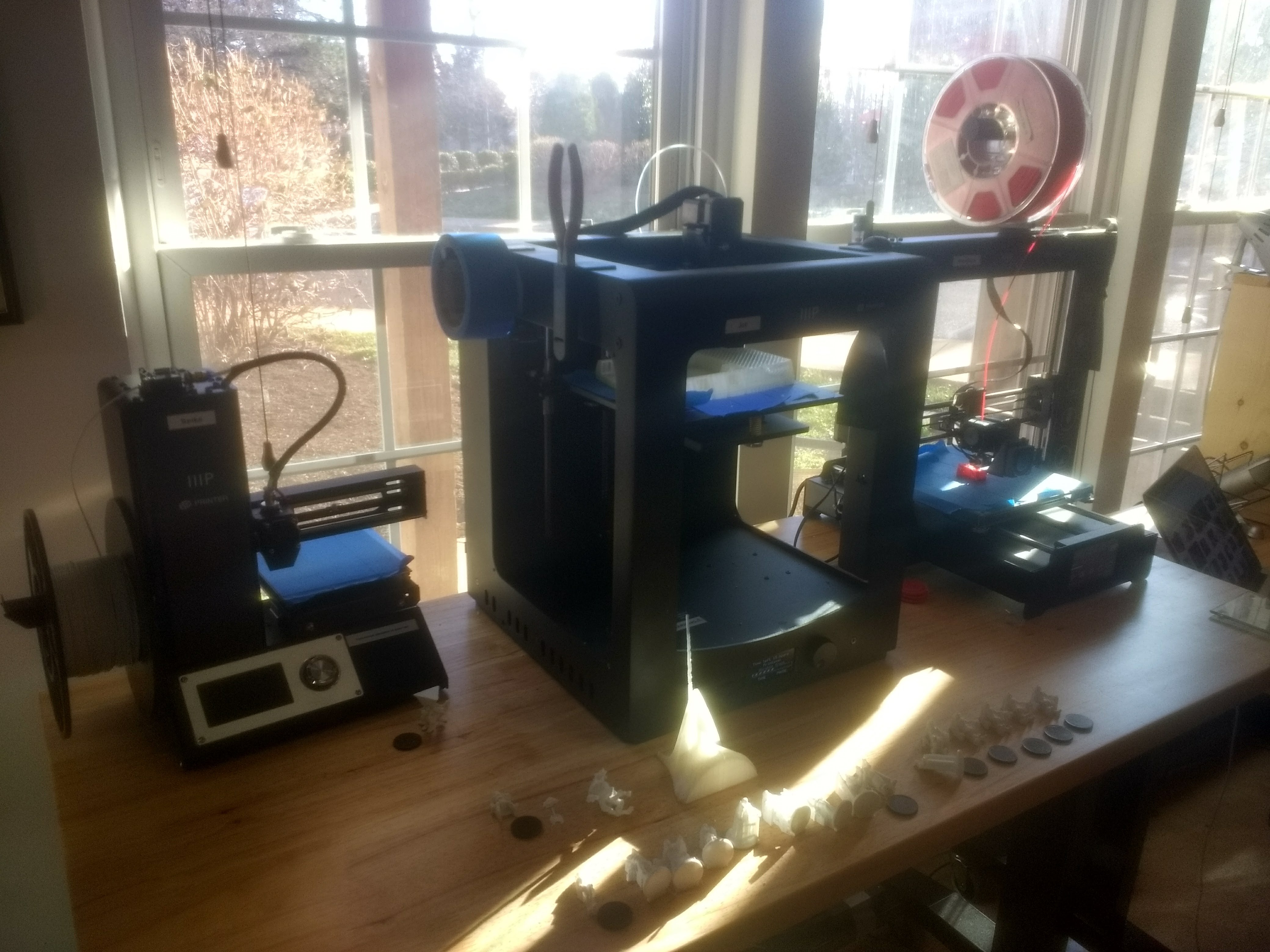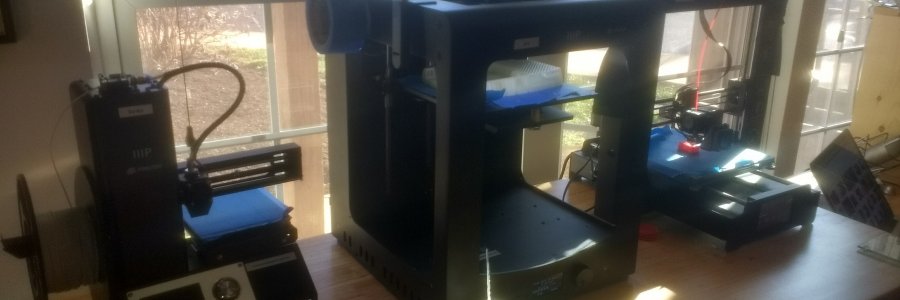So you want to use those nifty 3D printers for your tabletop RPG games. Awesome!
Before we get into your options, let's establish same basic terms and concepts:
The Basics
You can either buy a desktop 3D printer, or send a 3D model of your mini(s) to a service which will ship you back a printed mini.
There are many different flavors of 3D printing. Some use plastic, some resin, and some even more exotic materials (metal and glass printers exist!). But most of these materials are expensive; we'll be focusing on the plastic-based printers, called "FFF" or "FDM" printers (for "Fused Filament Fabrication" or "Fused Deposition Modeling").
An FFF/FDM printer uses software that "slices" a 3D model into a bunch of layers. The printer is loaded with a spool of plastic filament, then lays down the bottom layer of plastic, raises the print head slightly, lays down the next layer of plastic, and so forth, until it gets to the top of the model.
This means that a 3D model has to be "sliced" for the 3D printer to work. Slicing software converts a 3D model file into commands sent to the printer: Move the print head to this point, move while lay down plastic until you reach this point, then move over there while laying down plastic, etc.
This also means that some shapes can't be printed effectively. For example, imagine trying to print an upside-down pyramid: the model probably won't stay perfectly balanced on a tiny point throughout the entire print. The slicing software can add "supports," or thin columns that hold up parts of the print and can be pulled off laterIf .
If you have a file to print (or are making one), by far the most common file format for 3D printed objects is the "STL" format. Not all 3D files are created equal; a video game character's Maya file won't necessarily work with 3D printing software. If you have a file in another format, you'll probably want to convert it to an STL file.

I Don't Want To Buy a 3D Printer...
...And I Want A Common Monster or Hero
Miguel Zavala, a.k.a. "mz4250", has modeled hundreds of minis on his Shapeways account. You can also often find a pre-generated STL file if you just search the web for the name of what you're looking for, followed by "stl file". You can do the same for, say, "female elf stl file".
You can then send the file to Shapeways, a company that has big, professional 3D printers and can print in a wide variety of materials and sizes. Shapeways can be a little expensive, though.
...And I Want My Exact Hero
HeroForge offers an in-browser character creator. Pick from hundreds of options, then with a few clicks you can order a 3D print. A week or so later, the mini will arrive at your house. A basic plastic mini costs USD $20. You can also download the file for $10 for printing later.
If you don't want to pay HeroForge's prices, you can model a humanoid character in DesktopHero 3D, which works like HeroForge: select hair style, body style, clothes, weapons, etc., and then download the resulting file for free.
I Want To Buy a 3D Printer
Congratulations!
Which Printer Should I Buy?
If you're looking for a cheap 3D printer, I only personally have experience with three brands that still provide inexpensive printers: Micro3D and Monoprice.
I currently recommend Monoprice (Micro3D's printers are mostly plastic and break quickly; Printrbot's printers tend to be a little more finicky). Their "workhorse" low-end desktop 3D printer is the Monoprice Select Mini, which you can usually get for around $200 new. They also sell a cheaper model I haven't tried yet, and several models $100-$200 more if you're looking to print larger minis or work with exotic materials.
The Monoprice Mini is a good example of a standard low-end desktop 3D printer. It can print in either PLA plastic (slightly brittle) or ABS plastic (more finicky), and it can print objects up to about 4 inches wide, deep, and tall. It prints objects with a resolution up to 0.1mm, so any detail smaller than that won't show up.
What Material Should I Print In?
Most people print in PLA, which is an easy all-around material. I've heard good things about other materials, but I don't have enough experience with them yet to recommend them. You can get a 1 kg/2.2 lb roll of PLA for $20-$25 these days, and that will print many dozens of minis.
What Slicing Software Should I Use?
Choose the software that your printer manufacturer recommends. I've used a couple, and while I currently use and like Cura, honestly they all have strengths and weaknesses. You're best off using software for which your manufacturer has tuned its machine, all other things being equal.
Where Can I Get Mini Files?
I mentioned Miguel Zavala/mz4250 earlier, who's modeled heroes and monsters on his Shapeways account. He's got the entire 1st Edition Monster Manual up there, plus a few more recent monsters and dozens of heroes with various race and gender variations.
Thingiverse remains the most-used, highest-quality archive of printable files. While you'll have to search through literally millions of objects, you'll find plenty of RPG-related files, including some exotic objects like sci-fi shipwreck fragments and cathedral ruins.
I hope this helps! I've deliberately kept this relatively high-level, and I'll try to dig into each of these topics in a little more detail in future posts. Feel free to email me at brent@brentnewhall.com if you have more questions.

![[Atom feed]](/user/themes/geek-archaeology/images/atom-feed.png)
![[RSS feed]](/user/themes/geek-archaeology/images/rss-feed.png)
![[iTunes podcast feed]](/user/themes/geek-archaeology/images/itunes-feed.png)